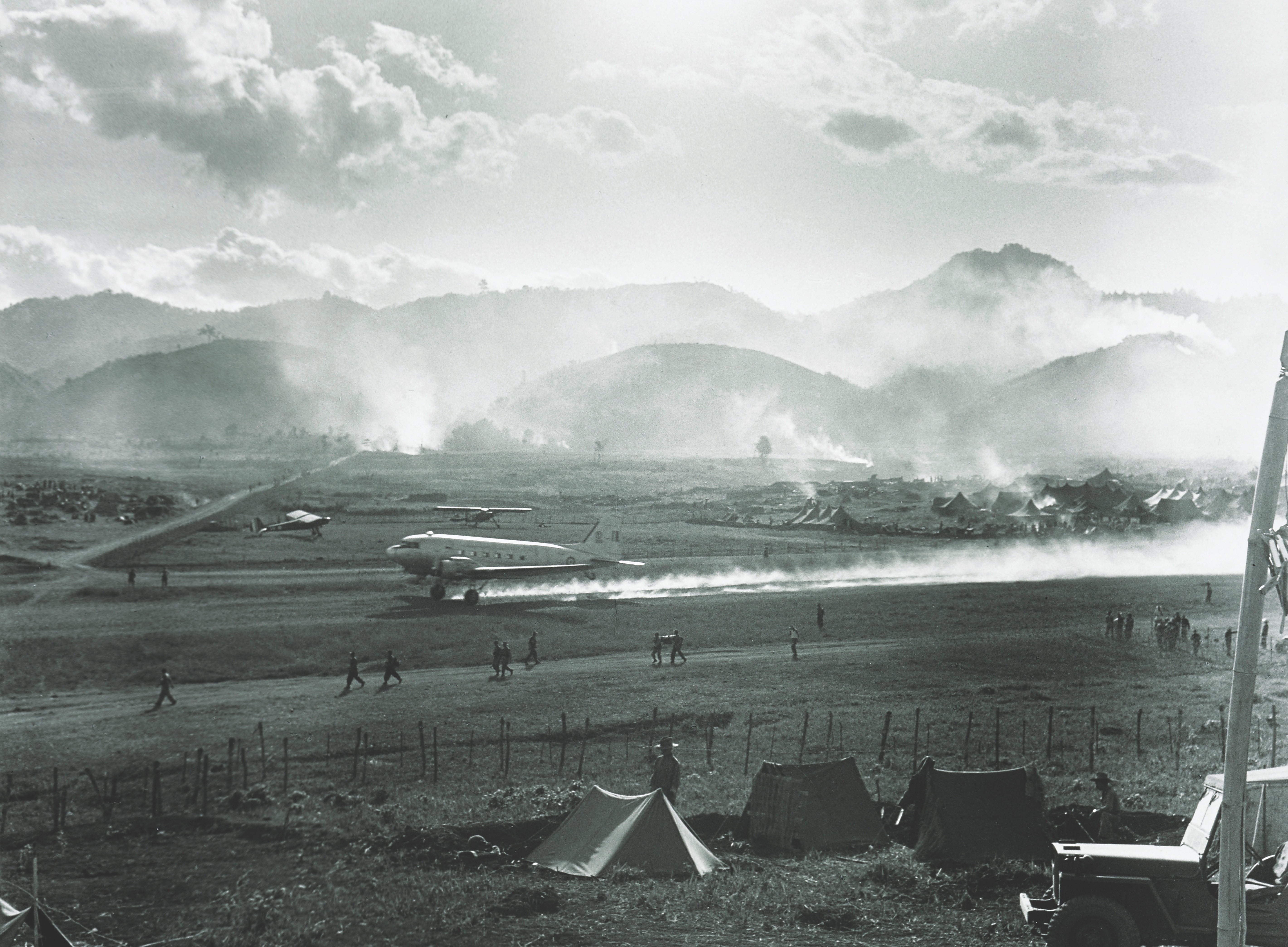In 1952, in Tonkin, the French-ruled region in the northernmost part of today’s Vietnam, a small garrison found itself surrounded by an army of Vietnamese independence fighters, the communist-led Viet Minh. The garrison at Gia Hoi, manned by French officers and members of the local Tai mountain tribes, was an isolated outpost in the rugged hills between the Red and Black rivers. The soldiers at Gia Hoi awoke on Oct. 15, 1952, to find an entire regiment of Viet Minh regulars massed for an assault.
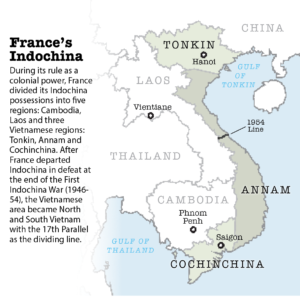 In an extraordinary achievement of logistics and concealment, Viet Minh Commander-in-Chief Gen. Vo Nguyen Giap had put 30,000 soldiers and 20,000 porters on the east bank of the upper Red River north of Yen Bai and quietly moved them across the river on Oct. 11. He then sent the troops southwestward. Giap’s forces consisted of the 308th, 312th and 316th divisions and the 148th Independent Regiment, armed with 75 mm recoilless rifles and 120 mm heavy mortars.
In an extraordinary achievement of logistics and concealment, Viet Minh Commander-in-Chief Gen. Vo Nguyen Giap had put 30,000 soldiers and 20,000 porters on the east bank of the upper Red River north of Yen Bai and quietly moved them across the river on Oct. 11. He then sent the troops southwestward. Giap’s forces consisted of the 308th, 312th and 316th divisions and the 148th Independent Regiment, armed with 75 mm recoilless rifles and 120 mm heavy mortars.
On Oct. 16, now aware of the Viet Minh threat, French Commander-in-Chief Raoul Salan dropped Maj. Marcel Bigeard’s 6th Colonial Parachute Battalion at nearby Tu Le, where it took command of local units. Bigeard’s battalion consisted of 667 soldiers—half French and the remainder African nationals and Vietnamese regular troops from Emperor Boa Dai’s noncommunist French-allied National Army of Vietnam.

A French base at Nghia Lo was attacked the night of Oct. 17 and fell the next morning. On the 19th, Bigeard sent a company to bring in the small garrison still holding out at Gia Hoi. Other garrisons joined him at Tu Le. After repulsing a Viet Minh attack the morning of Oct. 20, the parachute battalion and the other garrisons started a 40-mile retreat with the enemy in pursuit, fighting their way southwest through the mountains toward French positions at the Black River. Almost all French troops and their allies made it to the river crossings and the larger French forts—Moc Chau, Na San, Son La and Lai Chau—near the Loatian border. But the withdrawal cost Bigeard’s elite battalion 91 killed and many more severely wounded.
Additional Viet Minh victories forced Salan to commit precious reserves far from his Red River Delta bases.
This strained French air resources to a breaking point and ultimately allowed Giap to achieve his next objective: an invasion of northern Laos.
Three years earlier, in March 1949, France had recognized Emperor Bao Dai as head of a nominally independent Vietnam. Laos achieved the same status that July, and Cambodia followed in November. The three countries of Indochina became members of the Associated States of the French Union, which replaced the old French colonial system and established some autonomy for those countries, but France still exercised considerable control over all three.
Giap, a history professor and self-taught battlefield commander, knew he could draw the French out of their bases and into battle by attacking Laos, which had a long history of friendly relations with France. Salan reacted to Giap’s Laotian offensive by strengthening the defenses at Lai Chau, Na San and Moc Chau.
Salan also moved 30,000 men up the Red and Clear rivers toward Giap’s bases and rear areas north of Hanoi to relieve pressure on the French fortifications. Salan’s armored columns pressed northwest out of the Red River Delta on Oct. 29, capturing three towns and destroying large Viet Minh weapons and ammunition caches. But they failed to take any major bases and supply dumps. The lengthy French supply lines, as Giap had expected, quickly became overextended and bogged down, forcing Salan to end the operation on Nov. 14.
The Viet Minh, however, had their own problems. They had difficulty securing supplies of fresh rice and locating thousands of reluctant Tai porters needed to transport them, which slowed Giap’s advance. The three Viet Minh divisions crossed the Black River in mid-November and took aim at the French forts that constituted the last barrier to northern Laos. The 316th Division captured two posts, Bac Lay and Moc Chau, while the 308th Division moved toward the strongly entrenched air-ground base at Na San.
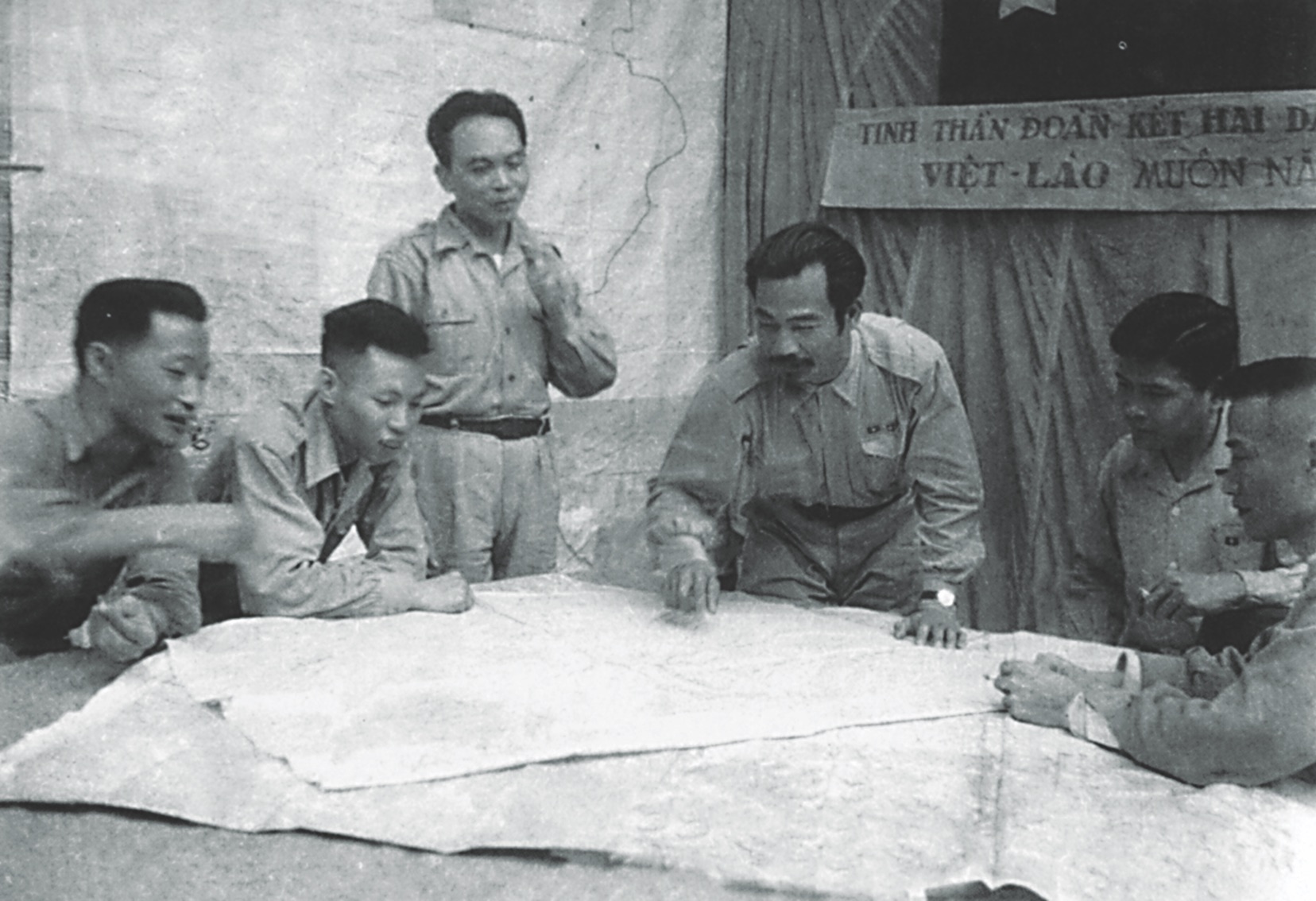
Farther north, the 312th Division bypassed the fortified camp at Lai Chau and headed toward the village of Dien Bien Phu, held by a small force of Laotians commanded by French officers.
Na San, on a northeast-southwest trail used by the Viet Minh to move supplies, was of critical importance to Giap, who needed unhindered access to the trail to support the 316th Division’s planned drive south to Laos. He believed Na San was defended by no more than five understrength French battalions of about 2,000 men.
The base at Na San was nestled in a valley enclosed by a 3-mile-wide ring of hills. The heart of the fortress lay in the valley bottom, buttressed by encirclements of barbed wire and minefields blocking all potential avenues of approach. There was an inner ring of 12 fortified defensive positions—strongpoints, in French points d’appui (armed positions). They protected the main base’s artillery and mortar emplacements, airstrip, headquarters, aid station and storage depot.
Base commander Col. Jean Gilles had constructed 16 additional strongpoints on the outer ring of hills, manned by companies of about 100 men each. These were arranged to deliver a grid of supportive machine gun and mortar fire.
Salan supported Na San with 12 infantry battalions—three Colonial and French Foreign Legion paratroop, three North African, three Tai, two Foreign Legion and one Vietnamese. He also sent 500 captured Viet Minh soldiers to Na San. Some Viet Minh prisoners of war were assigned to camps open to International Red Cross inspection, but thousands more were used as porters or coolies by their French captors.
By late November, when the Viet Minh were entering the area, Na San’s defenses were still incomplete. The redoubts on the outer ring of the base lacked barbed wire, and only one 120 mm mortar battery was in the central camp.
In total silence and under cover of darkness on Nov. 23, the entire 88th Regiment of the Viet Minh’s 308th Division passed undetected through Na San’s outer ring of hilltop posts. They moved into positions surrounding Strongpoint 8 on the inner ring’s northern boundary, half a mile from the camp center. Strongpoint 8 was defended by 110 men of Capt. Marcel Letestu’s 11th Company, 3rd Battalion, 5th Foreign Infantry Regiment.
Letestu and his men had constructed an extensive network of zigzagged communication trenches, cleared fields and set up barbed wire obstacles encircling five deeply dug-in, hardened blockhouses, which contained heavy machine guns well-positioned to provide covering fire to all approaches.
At the time of the attack, Letestu was at his post commanding the southern half of Strongpoint 8. Tai stragglers from the French forces’ retreat had been arriving all day. When Letestu heard intermittent firing around 8:30 p.m. from the northern half of Strongpoint 8, commanded by Lt. Robert Durand, he feared the defenders might be firing on friendly Tais.
However, Letestu soon heard cries of: “The Viets are in the trenches!” He grabbed his weapon and led his legionnaires northward. In the darkness, a small group of Viet Minh speaking French and claiming to be Tais had approached Strongpoint 8’s northern gate. When Durand opened the gate, the Viet Minh responded with recoilless rifles, mortars and machine guns, killing the lieutenant and another legionnaire.
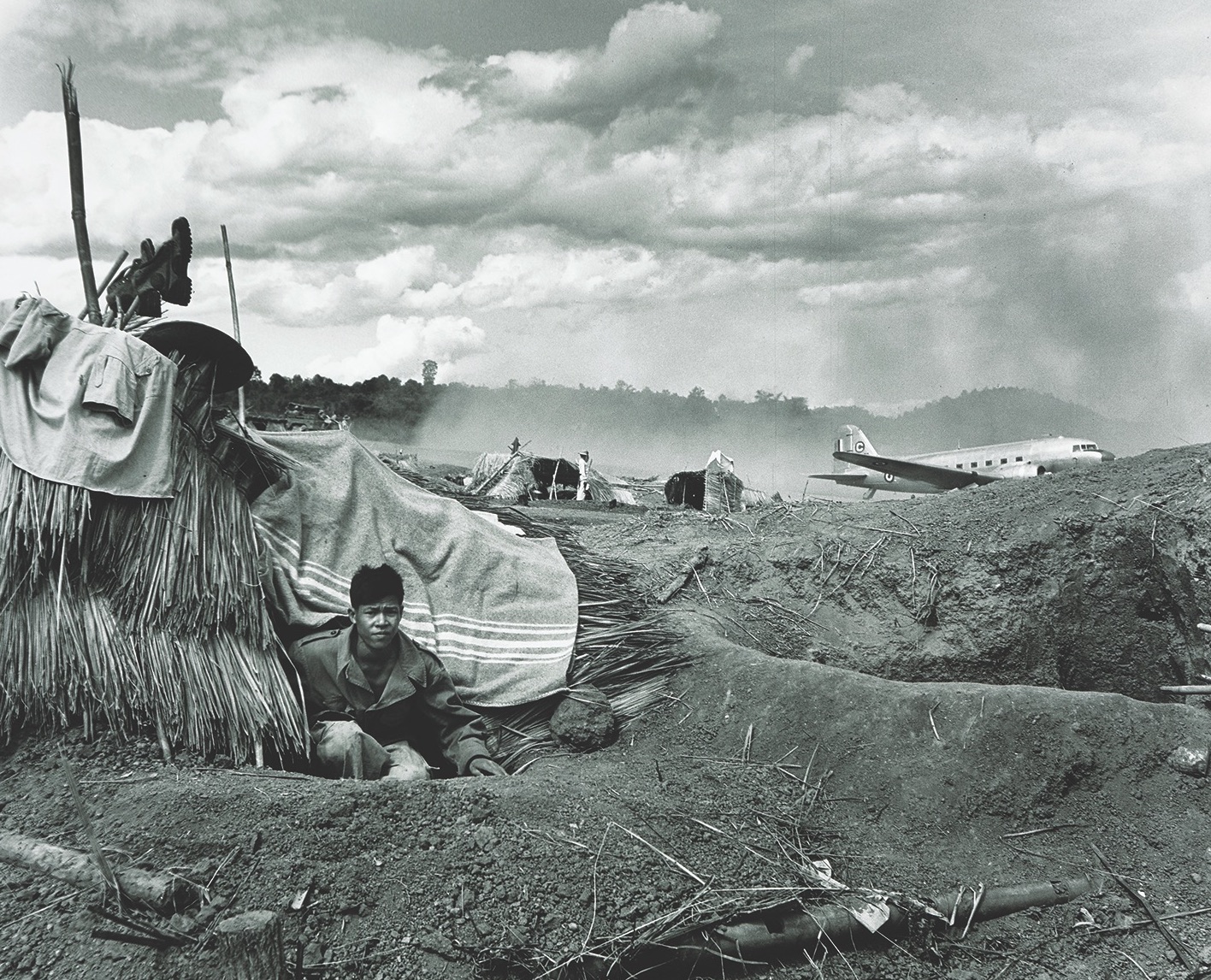
About two Viet Minh platoons broke through while the rest of the attackers were subjected to withering fire and halted. Letestu and his men fought back in a desperate, hand-to-hand struggle as a Viet Minh platoon penetrated the east and west trenches. The two sides exchanged automatic weapons fire at almost point-blank range, threw grenades and wielded bayonets, knives, entrenching tools and machetes in a wild melee. The Viet Minh carried Chinese-made versions of the U.S. M3A1 .45-caliber submachine gun, or “grease gun,” while the French used the FM 24/29 light machine gun. By 9:30 p.m. Letestu’s legionnaires prevailed but lost 15 men killed or missing and another 15 seriously wounded, depleting a third of the company’s strength.
Communist mortar shells, meanwhile, fell on the southern half of Strongpoint 8. Letestu established radio contact with the central camp’s lone fire support battery, a Foreign Legion mortar company. Soon the company’s four 120 mm and six 81 mm tubes were firing on Viet Minh columns advancing up the gullies on Strongpoint 8’s southeast perimeter, while Letestu’s fortification suffered a stinging barrage of mortar and recoilless rifle fire.
Viet Minh sappers (highly skilled commando troops) rushed the perimeter, carrying charges in tubes or packs that could be exploded to clear mines and blast holes in the wire. They were followed by ladder groups, three-man light machine gun teams, ammunition bearers and the main infantry assault force. Steady fire from the French defenders, backed by continuous mortar fire from the central camp, halted the assault’s first wave before the enemy could breach the wire.
Although the Viet Minh prepared meticulously, their tactics were outmoded and costly, based on the approach their Chinese instructors and the North Koreans had used against United Nations forces in Korea—massed, inflexible frontal assaults repeated until a breach was finally achieved, usually at night and seemingly oblivious to devastating troop losses.
French reinforcements reached Letestu at 11:30 p.m. with the arrival of Capt. Alan Guilleminot’s 5th Company from the 3rd Colonial Airborne Battalion, dispatched from the paratroop reserve beside Na San’s airstrip. Guilleminot’s men helped beat back a second wave of attackers who had gotten past the outer defenses. After an hour of confused, close fighting, the perimeter was cleared.
Following one final attempt to recover the wounded and weapons, the Viet Minh withdrew, leaving behind five wounded and 64 dead, many impaled on barbed wire. All of the members in one of the legion’s mortar crews were wounded. Their Viet Minh prisoner had stepped into the breach, loading and firing the weapon on his own until dawn. Many Viet Minh prisoners were extraordinarily faithful to their captors and willing to perform perilous tasks, such as daily treks to ammunition dumps, even without supervision. Very few tried to escape.
Base commander Gilles told Letestu he “had saved Na San” and praised Strongpoint 8’s “magisterial example of field fortifications.” Letestu later attained the rank of general and became commandant of the French Foreign Legion.
Giap spent the next six days preparing another assault on Na San while waiting for the rest of his three divisions to arrive. His soldiers probed the base’s perimeter after nightfall, feigning small attacks at various points to test French defenses. And the French sent reconnaissance patrols outside the base during the day.
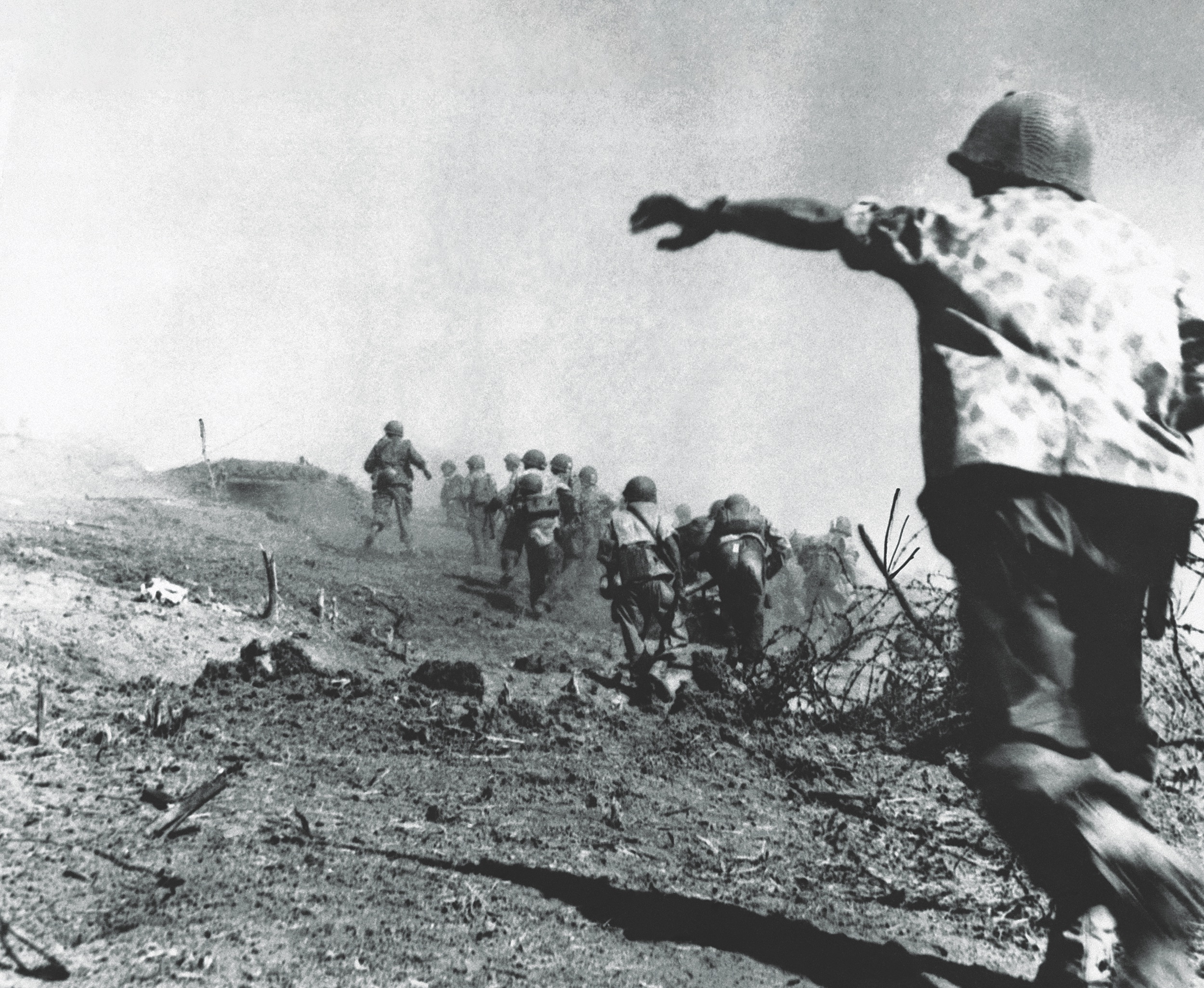
Meanwhile, the efforts to fortify Na San that began in October continued. Between Oct. 11 and Nov. 30, fully loaded C-47 Dakota cargo aircraft landed on the airstrip every 10 minutes for at least six hours each day. The planes delivered men, weapons, supplies, an estimated 3,000 tons of construction materials and 300 tons of barbed wire. Gilles also welcomed three 105 mm artillery batteries and another parachute battalion, bringing the garrison’s strength to 15,000 men.
Hostilities resumed the night of Nov. 30-Dec. 1. A battalion of the Viet Minh’s 141st Regiment, 312th Division, struck Strongpoint 22 bis, an outpost near Strongpoint 22, on the western edge of the outer ring of hills about a half-mile from the airstrip.
Despite supporting artillery and mortar fire, the French defenders—one company from the 2nd Tai Battalion and some Moroccan riflemen—abandoned the hill in less than an hour and fell back to the airstrip. Although brave fighters, the Tais lacked the training and determination to hold trenches under heavy bombardment.
Col. Jean Gilles watched as Viet Minh on the hilltop were engulfed in a storm of explosives and flying steel.
Fearing the Viet Minh would bombard the airstrip, Gilles ordered a counterattack that began with a 120 mm mortar barrage against captured Strongpoint 22 bis. With the battlefield illuminated by parachute flairs dropped by circling aircraft, Gilles watched as Viet Minh on the hilltop were engulfed in a storm of explosives and flying steel that lasted nearly three hours. Two companies from the 2nd Foreign Parachute Battalion easily recaptured the strongpoint just after dawn.
Also on the night of Nov. 30, heavy fighting took place at Strongpoint 24, beginning around 8 p.m. on the outer hilltops about 500 yards northeast of the main camp. The position, held by one company each of Tai and Moroccan riflemen, faced sustained mortar and recoilless rifle fire. The defenders repulsed two wave assaults by the Viet Minh 102nd Regiment, 308th Division, before being overrun at 3 a.m. on Dec. 1.
Troops from the 3rd Colonial Parachute Battalion launched a dawn counterattack, backed by two companies from the 2nd Foreign Airborne Battalion and one from the 6th Moroccan Marksmen Regiment. Dug in on the hill, the Viet Minh put up a fierce resistance. Heavy fighting raged all day as the paratroopers made repeated charges up the hill with fixed bayonets, supported by artillery, mortars and aircraft that included F6F Hellcat and F8F Bearcat fighters.
When the exhausted troops retook Strongpoint 24 at 4 p.m. and thus restored the outer ring of defenses, they found a dead Viet Minh officer with orders from Giap confirming the importance the commander placed on taking the two strongpoints. He had planned to move anti-aircraft machine guns into those captured fortifications to shoot down French planes supporting the ground troops. He also wanted to use the high ground on the hill to more accurately direct mortar fire on the airstrip below. Giap achieved neither.
There was some success, however, for Giap. Away from the fight at Na San, his 148th Independent Regiment took the village of Dien Bien Phu, deeper inside Tai territory, on Nov. 30, almost without firing a shot.
Despite two failed assaults and severe losses at Na San because he underestimated the base’s size and defenses, Giap stubbornly ordered attacks on two more strongpoints, 21 bis and 26, at 1 a.m. on Dec. 2, following an all-day barrage.
Strongpoint 21 bis, in the southwest sector of the outer hilltop positions, was held by Lt. Gabriel Bonnet’s 10th Company, 3rd Battalion, 5th Foreign Infantry Regiment. Recoilless rifle fire and mortar shells rained on Bonnet’s men from all directions. Suicidal sappers, stripped to the waist, blasted gaps in the defensive wire.
But a massed Viet Minh infantry attack by two battalions of 312th Division was repulsed. F8F Bearcat fighters and B-26 bombers strafed the attackers and dropped napalm canisters on a battlefield lighted with parachute flares. French 105 mm howitzers saturated the Viet Minh assembly areas and avenues of approach.
Undeterred, Giap sent yet another battalion into the fray. It didn’t fare any better. The attackers finally withdrew around 4 a.m. The Viet Minh left many weapons and casualties behind, including 350 dead and 50 wounded. Outnumbered 10 to 1, Bonnet’s lone company of legionnaires had repulsed an entire enemy regiment. French reinforcements arrived at 7 a.m.
Strongpoint 26, on the eastern side of the outer defensive ring, sat on a hill whose dominant feature was an approximately 500-yard-long ridge with steep slopes on all sides. The outpost, under the command of Maj. Pierre Favreau, was manned by the entire 3rd Battalion of the 3rd Foreign Infantry Regiment. French troops had built a perimeter of wire and mines around the command post, also protected by sandbagged machine gun bunkers and blockhouses.
The Viet Minh attacked Strongpoint 26 with four assaults beginning at 1 a.m. Covered by mortar and recoilless rifle fire, sappers broke through the wire. They were followed by several waves of infantry armed only with hand grenades. Then came assaults from three battalions, but they were beaten down by the murderous volume of French fire. The communists pulled back at 4 a.m., leaving behind 260 dead. The French defenders suffered six killed and 30 wounded. As dawn approached, Na San commander Gilles’ excited words rang over the radio: “We have not been breached! All positions held! It was an indescribable deluge of fire.”
Those early morning attacks on Dec. 2 ended Giap’s attempt to capture Na San. He withdrew his forces over the next several days and launched an incursion into northern Laos. However, his troops were hungry, exhausted, low on ammunition and suffering from vastly overstretched supply lines. Giap was forced to cancel his Laotian foray.
Although unsuccessful in his attempts to take Na San, Giap had learned valuable lessons. The general realized that if he were to launch more strikes in Tonkin’s northwestern hill country and northern Laos the French would overextend themselves by defending bases far from their Red River Delta headquarters. If he could hold the high ground, his heavy artillery would shut down the airstrips, and heavier anti-aircraft weapons could interdict French planes before they airdropped supplies. Giap knew those tactics would involve massive, unprecedented logistics and engineering work, but they would enable his army to wage a protracted siege.
The general never acknowledged his defeat at Na San. “The method of combat was sound,” Giap later told a journalist, referring to his decision to fight hill by hill rather than hitting the whole camp. “But the troops were not yet well trained. We did succeed in wiping out, I recall—two battalions. It wasn’t a defeat—but we suffered losses.”
Giap was faulted throughout his military career for seeming indifference to his appalling casualties. During the 26-day battle of Day River in 1951, for example, Giap lost 11,000 men killed, wounded, captured or missing—the equivalent of an entire division.
At Na San, the Viet Minh 308th Division suffered 4,000 casualties. Giap’s total losses may have been as high as 5,000 killed and 2,000 wounded, while French losses are often described as “two battalions” (300 killed and 640 wounded).
The French had achieved a clear tactical victory, but the successful defense of one base did not hinder the overall movement of Viet Minh troops in the region. Gilles, promoted to brigadier general, and Tonkin theater commander Maj. Gen. René Cogny doubted the usefulness of air-ground bases in blocking enemy offensives. The French decided it was too costly to support the isolated base at Na San, and a new commander-in-chief, Gen. Henri Navarre, evacuated the base in August 1953. Giap quickly dispatched intelligence and engineering teams to thoroughly analyze Na San’s fortifications.
Even though Navarre abandoned Na San, he thought the success there validated the air-ground base concept. When Giap in 1953 threatened two areas he knew the French would feel compelled to defend—Lai Chau and Laos—Navarre put an air-ground base in his path, this time with armor and heavier firepower.
That base was in the Dien Bien Phu Valley. Giap’s troops hit Dien Bien Phu on March 13, 1954. In a shocking reversal of the victory at Na San, the French army surrendered on May 7, 1954, after a 56-day siege showed that Giap had learned his lessons well.
The devastating loss ended French control of Vietnam. An international treaty signed July 21, 1954, partitioned Vietnam at the 17th Parallel, dividing Ho Chi Minh’s communist Democratic People’s Republic in the north from the U.S.-supported Republic of Vietnam in the south. By mid-1954, Ho and Giap, aided by China and the Soviet Union, had seemingly achieved the impossible: turning countrywide guerrilla insurgent forces into a huge conventional army and defeating a professional European army backed by armor and air power.
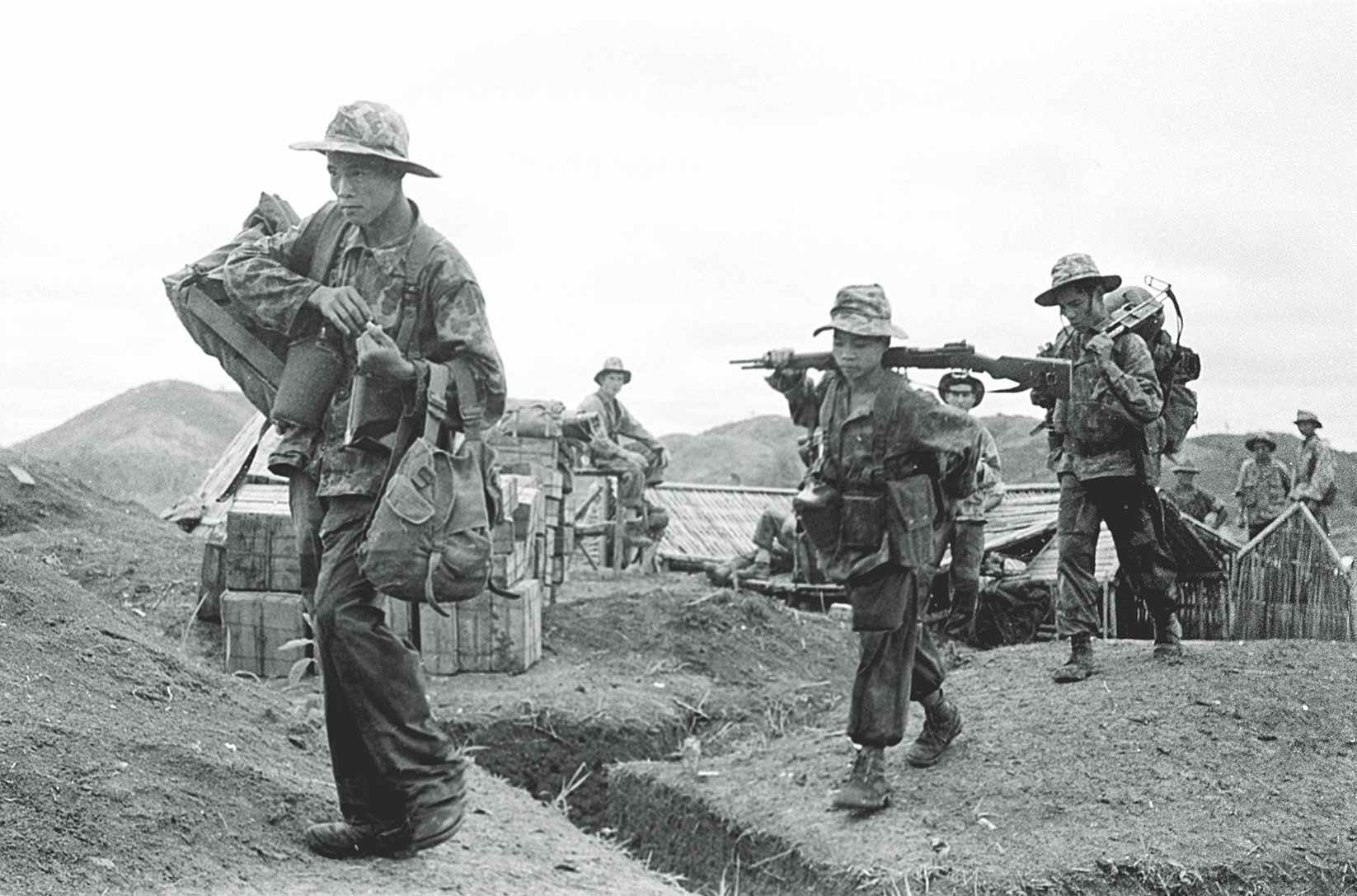
The U.S. commitment to South Vietnam’s survival was cemented with the establishment of U.S. Military Assistance Command, Vietnam, in February 1962, the beginning of America’s direct military involvement. Large U.S. combat forces began arriving in 1965 for a full-scale war that ended with helicopters evacuating Americans from the U.S. Embassy in Saigon in 1975 after South Vietnam fell to the forces of North Vietnam—whose minister of defense was Vo Nguyen Giap.
Historians Kevin Boylan and Luc Olivier, in their book about the 1954 Dien Bien Phu siege, Valley of the Shadow, write that you can “trace a direct chain of causality linking the French defeat at Dien Bien Phu to the United States’ own disastrous adventure in Vietnam.” V
John Walker served in Vietnam July 1970-June 1971 as a sergeant with the 173rd Airborne Brigade at Landing Zone English in Binh Dinh province in South Vietnam’s central coastlands. He lives in Oceanside, California.
This article appeared in the August 2020 issue of Vietnam magazine. For more stories from Vietnam magazine, subscribe here:

